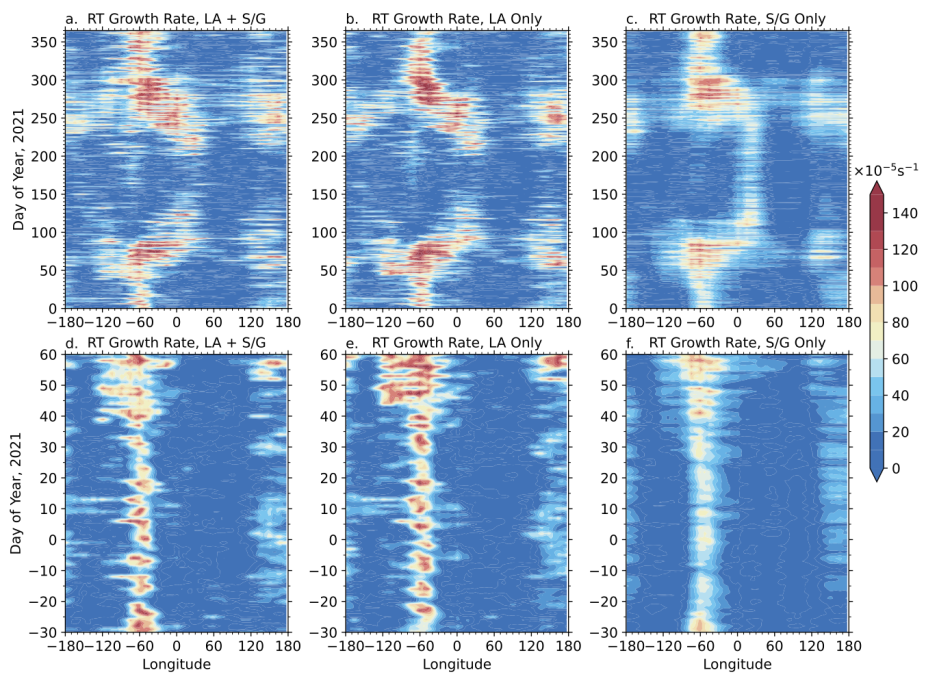
WACCM-X Rayleigh-Taylor (R-T) instability growth rate during from January to December 2021 for simulations with (a) lower atmosphere and solar/geomagnetic variability (LA+S/G), (b) only lower atmosphere variability (LA Only), and (c) only solar/geomagnetic variability (S/G Only) simulations. (d-f) Same as (a-c) except for the time period of November 2020 to March 2021. The results show that the day-to-day variability in the R-T instability growth rates is driven by both the lower atmosphere and solar/geomagnetic variations. A quasi-periodic variability is seen in early 2021 that is related to the quasi-six day planetary wave.
Journal of Geophysical Research–Space Physics: N. M. Pedatella, E. Aa, and A. Maute explore the influence of atmospheric planetary waves on the occurrence of irregularities in the low latitude ionosphere is investigated using Whole Atmosphere Community Climate Model with thermosphere-ionosphere eXtension (WACCM-X) simulations and Global Observations of the Limb and Disk (GOLD) observations. GOLD observations of equatorial plasma bubbles (EPBs) exhibit a ∼6-8 day periodicity during January-February 2021. Analysis of WACCM-X simulations, which are constrained to reproduce realistic weather variability in the lower atmosphere, reveals that this coincides with an amplification of the westward propagating wavenumber-1 quasi-six day wave (Q6DW) in the mesosphere and lower thermosphere (MLT). The WACCM-X simulated Rayleigh-Taylor (R-T) instability growth rate, considered as a proxy of EPB occurrence, is found to exhibit a ∼6-day periodicity that is coincident with the enhanced Q6DW in the MLT. Additional WACCM-X simulations performed with fixed solar and geomagnetic activity demonstrate that the ∼6-day periodicity in the R-T instability growth rate is related to the forcing from the lower atmosphere. The simulations suggest that the Q6DW influences the day-to-day formation of EPBs through interaction with the migrating semidiurnal tide. This leads to periodic oscillations in the zonal winds, resulting in periodic variability in the strength of the prereversal enhancement, which influences the R-T instability growth rate and EPBs. The results demonstrate that atmospheric planetary waves, and their interaction with atmospheric tides, can have a significant impact on the day-to-day variability of EPBs.